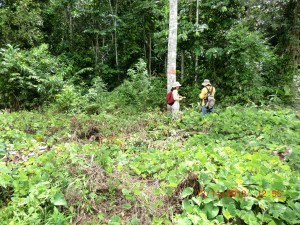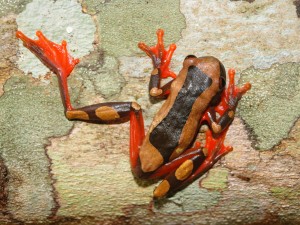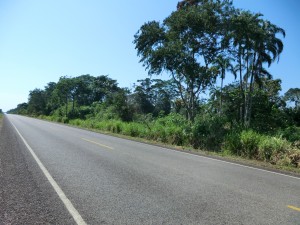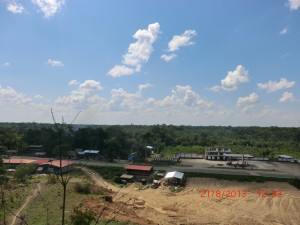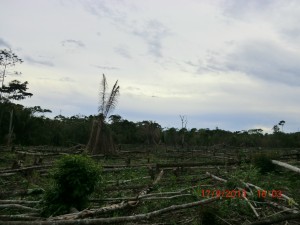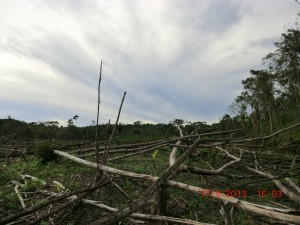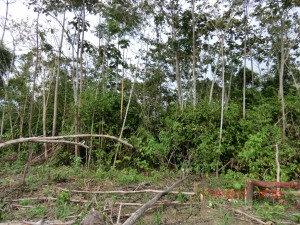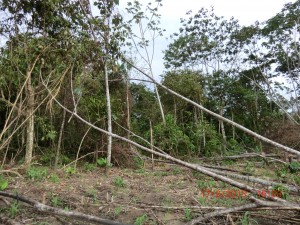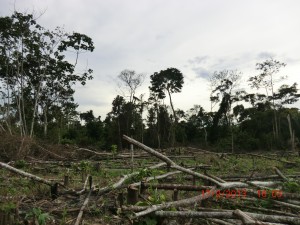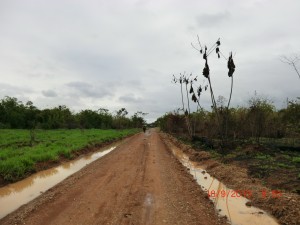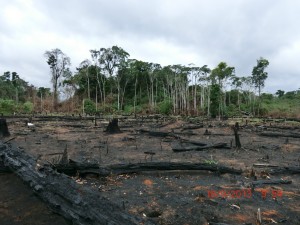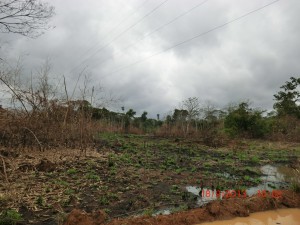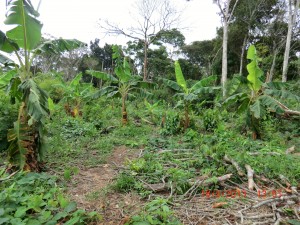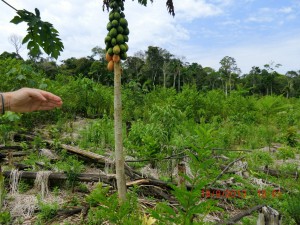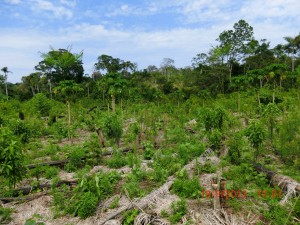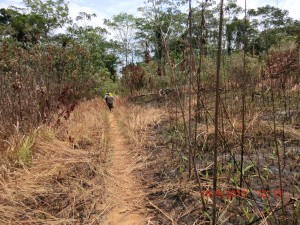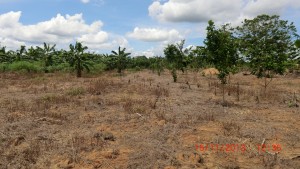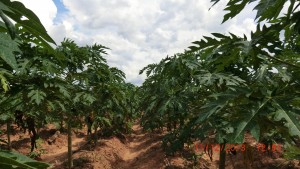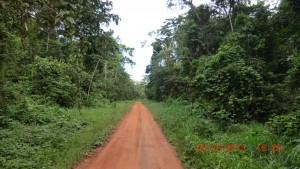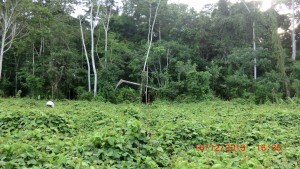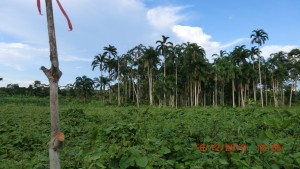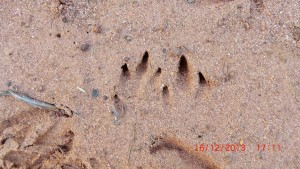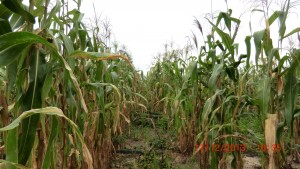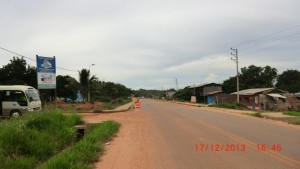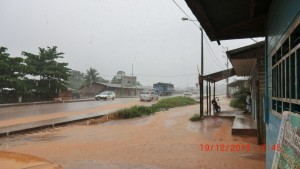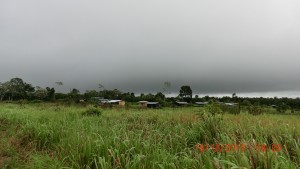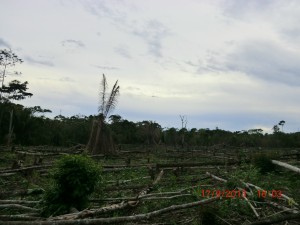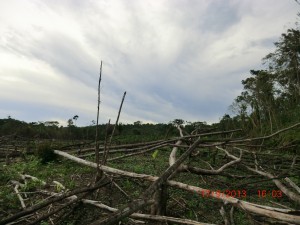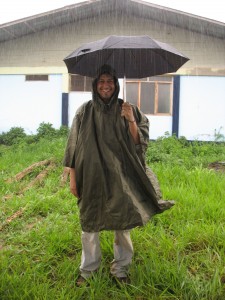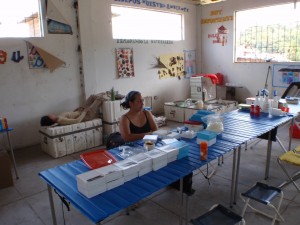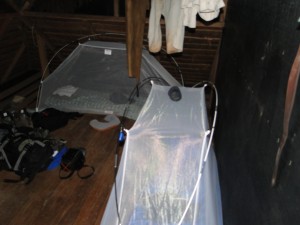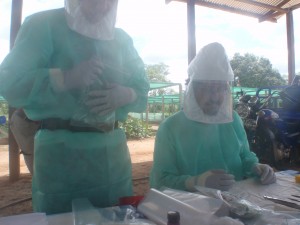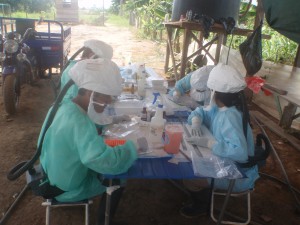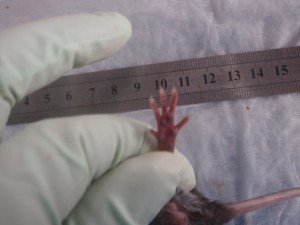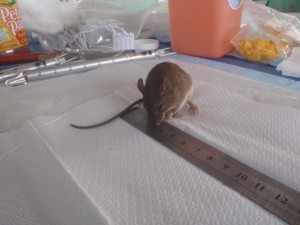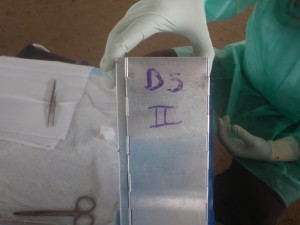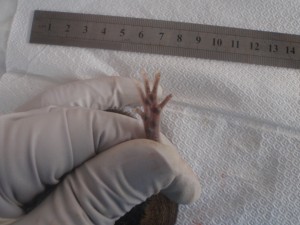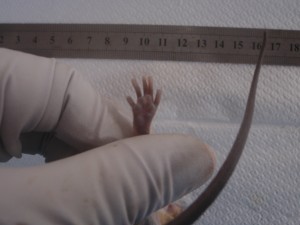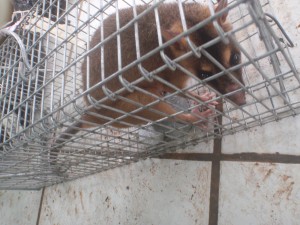RAICES: Effects of anthropogenic habitat perturbation on rodent population dynamics and risk of rodent-borne diseases (CRN 3076)

Project information
Tulane University, EE.UU.
Policy brief: Impact of huge highways in the jungle
Results
This is a summary of the most salient project results. For further information see the project website, project papers or contact the investigators directly.
This project surveys development frontier regions for emerging rodent-born diseases. Maps of forest and non-forest cover at 50 m resolution developed from satellite images and linked to over 3000 geo-referenced ground-level photos are now the most reliable land cover inventory on forest fragmentation, animal movement, and disease risk.
Rodent trapping in Madre de Dios, Peru, is in progress with 500 samples and species identifications. Half the animals trapped in border or disturbed ecosystems were of the genus Oligoryzomys which contains species known to transmit Hantavirus.
Collection was accompanied by a survey on impact and vulnerabilities of focus groups and informants from 522 households in four communities, with information collected on household demographics and finances, personal and social characteristics, and human and material resources. The survey on perceptions of health and rodent-borne diseases along the Inter-Oceanic Highway is complete.
Absence of a clear permit process in Bolivia has prevented the shipment of samples from Bolivia for processing. Samples were preserved in liquid nitrogen for future examination and pathogen search.
Project investigators
Principal investigator (PI) and lead agency
Daniel Bausch (daniel.bausch@med.navy.mil)
Tulane University, USA
Valerie Paz-Soldan (vpazsold@tulane.edu)
Tulane University, USA
Townsend Peterson (town@ku.edu)
The University of Kansas, USA
Xiangming Xiao (xiangming.xiao@ou.edu)
University of Oklahoma, USA
Victor Raul Pacheco Torres (vpachecot@unmsm.edu.pe)
Universidad Nacional de San Marcos, Peru
Hugo R. Razuri-Yori (hugo.razuri@med.navy.mil)
U.S. Naval Medical Research Center, USA
Claudia Guezala
U.S. Naval Medical Research Center, EEUU
Stella Maria Hartinger Peña (stella.hartinger@unibas.ch)
Fundación Cayetano Heredia, Peru
Ana Lineth Garcia Orellana (lineth.garcia@gmail.com)
Universidad Mayor de San Simón, Bolivia
Phil Cooper (p.j.cooper@liverpool.ac.uk)
Pontificia Universidad Católica del Ecuador, Ecuador.
Students
Alejandra Torrez, Master, Universidad Mayor de San Simon, Bolivia.
Alexander Pari, Master, Universidad Nacional Mayor de San Marcos, Peru
Amner Gonzales, Universidad Nacional de la Amazonía Peruana, Peru.
Amy Powell, Master, University College London, UK
Angie Uturunco, Undergraduate, Universidad Nacional Mayor de San Marcos, Peru.
Antuane Zeballos, Master, Universidad Nacional Mayor de San Marcos, Peru.
Ayleen Davila, Undergraduate, Universidad Nacional Agraria La Molina, Peru.
Carmen Julia Ramos, Undergraduate, Naval Medical Research, Peru.
Christian Loaiza, Master, Universidad Nacional Mayor de San Marcos, Peru.
Dennisse Ruelas Pacheco, Master, Universidad Nacional Mayor de San Marcos, Peru.
Efrain Rios, Undergraduate, Universidad Nacional de la Amazonía Peruana, Peru.
Felipe Dos Santos, Undergraduate, Universidad Nacional de la Amazonía Peruana, Peru.
Gabriela Salmon-Mulanovich, PHD, Naval Medical Research, Peru.
Jimmy Gandulia, Undergraduate, Universidad Nacional de la Amazonía Peruana, Peru.
Jose Alvarez, Undergraduate, Universidad Nacional Mayor de San Marcos, Peru.
Juan Carlos Huaranca, Master, Universidad Mayor de San Simon, Bolivia.
Judith Carrasco, Master, Universidad Nacional Mayor de San Marcos, Peru.
Kathleen Rees, Master, Tulane University, USA.
Lara Schwarz, Undergraduate, McGill Univ, Montreal, USA.
Lindsey Campbell, PHD, The University of Kansas, USA.
Luz Segura, PHD, Universidad Nacional Mayor de San Marcos, Peru.
Maribel Taco, Master, Universidad Nacional Mayor de San Marcos, Peru.
Marisol Hidalgo, Master, Universidad Mayor de San Simon, Bolivia.
Melisa del Alcazar, Master, Universidad Nacional Mayor de San Marcos, Peru.
Mercedes Molina Veramendi, Undergraduate, Universidad Nacional Mayor de San Marcos, Peru.
Miguel Angel Ranilla H, Undergraduate, Universidad Nacional de la Amazonía Peruana, Peru.
Nadia Espinoza, Undergraduate, Universidad Nacional Mayor de San Marcos, Peru.
Nicolas Tinocco, Undergraduate, Pontificia Universidad Catolica del Ecuador, Ecuador
Olivia del Alcazar Orosco, Undergraduate, Universidad Nacional Mayor de San Marcos, Peru.
Pamela Sanchez, Undergraduate, Universidad Nacional Mayor de San Marcos, Peru.
Paola Delgado, Undergraduate, Universidad Mayor de San Simon, Bolivia.
Pilar Valentin, Undergraduate, Universidad Nacional Mayor de San Marcos, Peru.
Renzo Malaga, Undergraduate, Universidad Nacional de la Amazonía Peruana, Peru.
Roberto Lope, Undergraduate, Naval Medical Research, Peru.
Robinzon Paniagua, Undergraduate, Universidad Nacional de la Amazonía Peruana, Peru.
Rocío Bardales, Master, Universidad Nacional Mayor de San Marcos, Peru.
Samantha Zevallos, Undergraduate, Universidad Cientifica del Sur, Peru.
Sandro Villarroel, Master, Universidad Mayor de San Simon, Bolivia.
Silvia Carhuarupay, Undergraduate, Universidad Nacional de la Amazonía Peruana, Peru.
Sonia Refulio, Master, Universidad Nacional Mayor de San Marcos, Peru.
Valerie Baquerizo, Post Doctorate, Universidad Nacional Mayor de San Marcos, Peru.
Valerie Cortez, Post Doctorate, University of Washington, USA.
Valerio Torres, Undergraduate, Universidad Nacional de la Amazonía Peruana, Peru.
Walter Bustos, Undergraduate, Ecuador.
Executive Summary
The global population explosion and need for natural resources is resulting in widespread human intrusion into previously uninhabited environments. This perturbation affects biodiversity, which can result in changes in the microbial community, with the potential for shifting patterns of transmission of zoonotic pathogens to humans. Understanding how anthropogenic habitat perturbations may impact rodent populations and the risk of rodent-borne diseases requires a multidisciplinary approach, including ecological field research, mammalogy, remote sensing and geographic information systems (GIS), epidemiology, ecological modeling, pathogen diagnostics, and the social sciences. The network of institutions from Peru, Bolivia, Ecuador, and the United States will undertake the study of the ecology and social vulnerability to rodent-borne diseases as a consequence of global change and habitat perturbation. Habitat perturbation (e.g. road building, conversion to pasture and cropland, human settlement) will be identified and terrestrial small mammals will be trapped along a gradient of perturbation to explore changes in rodent population dynamics. Satellite imagery and other remotely sensed data will be combined with data on animal species to construct ecologic niche models of the relationship between habitat perturbation and rodent assemblages.
Quantitative and qualitative human behavioral studies will be used to develop a new assessment tool to measure social vulnerabilities and health risks related to habitat change as prioritized by the community itself. The result of this project will be a novel view of small mammal ecology and the potential for pathogen transmission in ecosystems facing dramatic changes in land use. Training and capacity building components of the project will provide a multidisciplinary cadre of well-trained and equipped scientists for the study of the ecology of biodiversity and zoonotic diseases in South America. The project will benefit from a number of ongoing projects with support from the U.S. National Institutes of Health (NIH), Google Foundation, Armed Forces Health Surveillance Center’s Global Emerging Infections Surveillance and Response System Division (GEIS), U.S. Bioengagement Program, and Defense Threat Reduction Agency (DTRA).
Photos





